Stadiums are more than just venues for sports—they are architectural marvels that push the boundaries of design and innovation. From iconic shapes to sustainable features, these remarkable structures showcase how function meets artistry. In this list, we explore some of the most unique stadiums around the world, each celebrated for its one-of-a-kind design and engineering feats. Whether carved into mountainsides or built with retractable roofs, these stadiums are designed to enhance the spectator experience while making a statement in modern architecture.
Allianz Arena
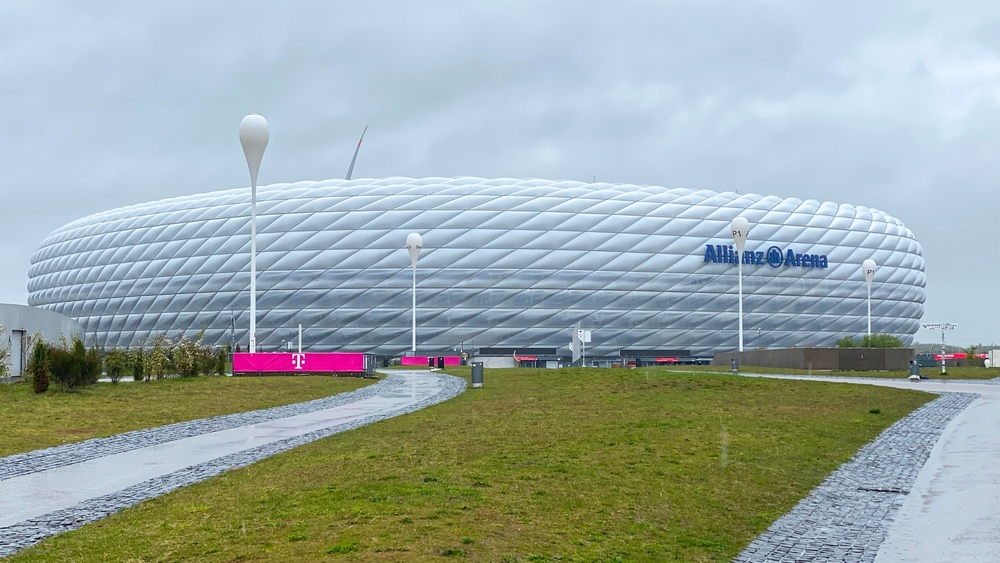
The Allianz Arena in Munich, Germany, is celebrated for its futuristic and vibrant exterior, which features over 2,800 inflated ETFE plastic panels. These panels give the stadium its characteristic “cloudy” feel and have the ability to change colors based on the team playing, creating a dynamic and engaging visual experience for fans. The stadium is home to Bayern Munich and was designed by renowned Swiss architects Herzog & de Meuron. It is also the first stadium in the world with a fully color-changing facade, which adds a unique element of design that can adapt to different events. Despite this feature, concerns were raised about the lights potentially distracting nearby drivers, leading to adjustments in color usage. The interior of the stadium is just as striking, with its sleek, crater-like design providing an intimate atmosphere for the 75,000 spectators. The stadium’s fabric also self-cleans, which minimizes maintenance needs and enhances its futuristic appeal. With its proximity to the pitch and elevated seating inclinations, the design aims to heighten crowd intensity during matches.
Estádio Municipal de Braga
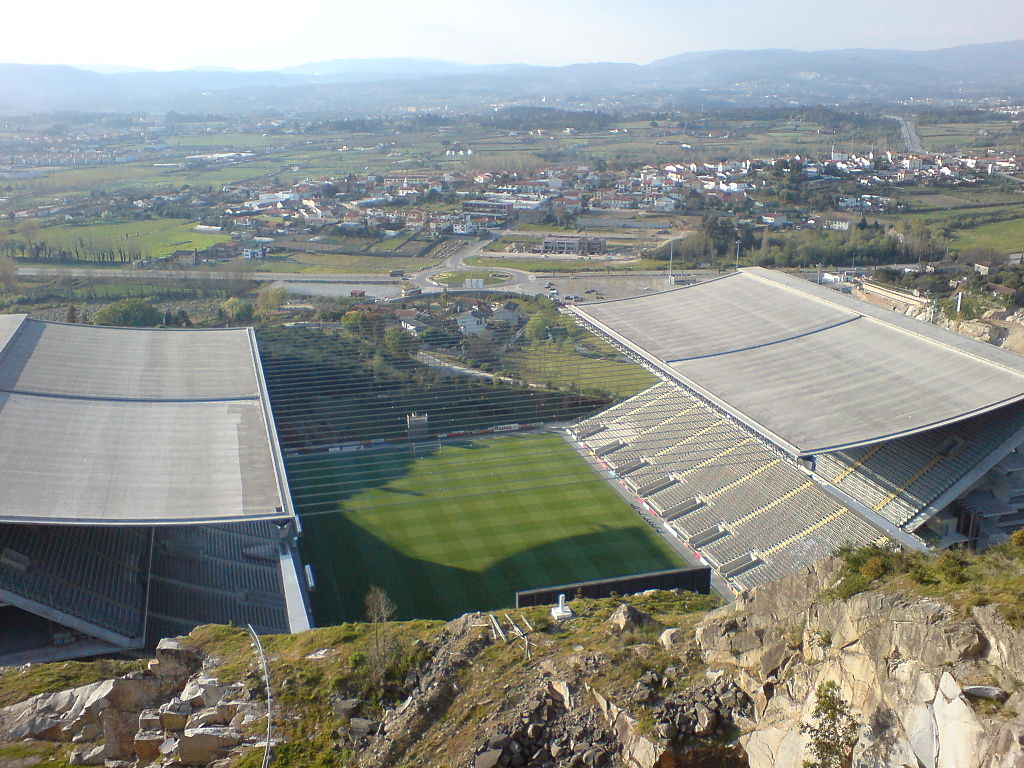
Situated in Braga, Portugal, the Estádio Municipal de Braga is an architectural wonder carved into the side of a quarry on Monte Castro. Designed by the Pritzker Prize-winning architect Eduardo Souto de Moura, the stadium’s unique design integrates the natural landscape into the construction, making it one of the most striking stadiums in the world. The seating is located on only two sides of the pitch, while the other end offers a stunning view of the exposed rock face, blending nature and architecture seamlessly. A canopy-style roof covers each stand, which is connected by steel cables inspired by ancient Inca bridges. Another standout feature is its large scoreboard mounted on the cliffside, a unique element seldom seen in other sports venues. This minimalist yet bold design makes it one of the most memorable stadiums, offering breathtaking views while providing fans with a remarkable match-day experience.
Beijing National Stadium
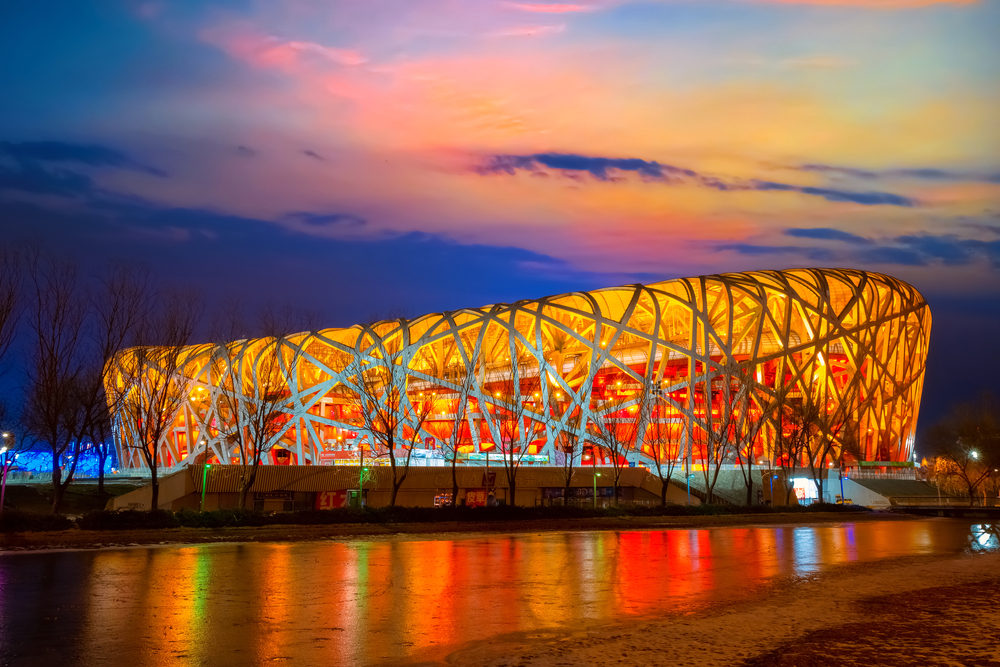
Beijing National Stadium, often called the Bird’s Nest, is an iconic symbol of modern Chinese architecture. Designed by Herzog & de Meuron alongside Chinese artist Ai Weiwei, its steel lattice structure mimics a bird’s nest, symbolizing both strength and unity. It was originally built for the 2008 Beijing Olympics, with a capacity of 80,000 spectators. The design is not only visually stunning but also practical, featuring sustainable elements like rainwater collection and natural ventilation systems. The intricate steel web, weighing over 42,000 tons, creates a visually compelling, sculptural form that stands out among stadiums worldwide. Its circular shape is a nod to Chinese ceramics, symbolizing harmony between heaven and earth.
First National Bank Stadium
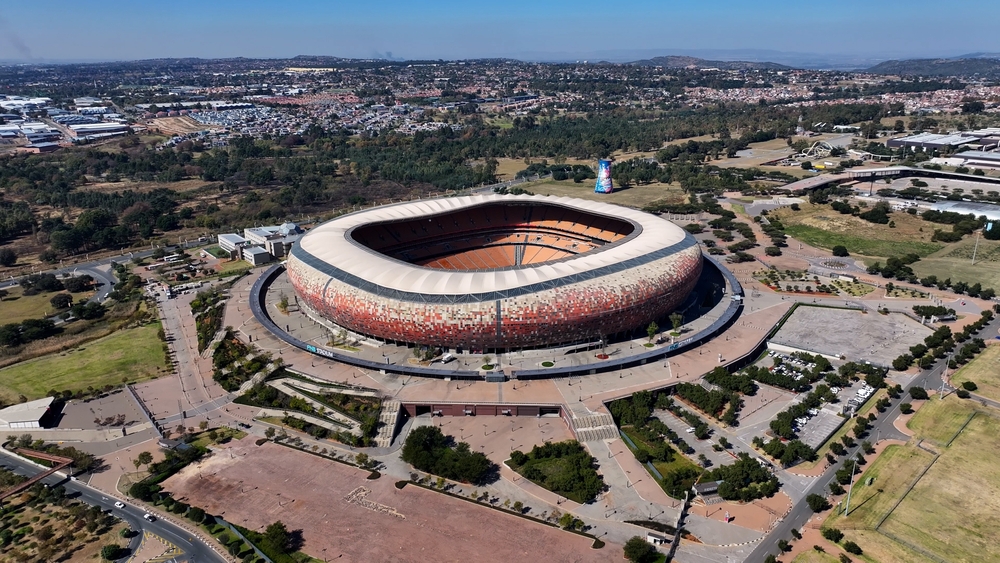
Located in Johannesburg, South Africa, the First National Bank (FNB) Stadium, also known as Soccer City, is the largest stadium in Africa with a seating capacity of 94,000. The design was inspired by traditional African pottery, particularly the calabash, which gives the stadium its unique rounded shape. The outer shell is made of earth-toned panels with openings that allow natural light to create a glowing effect during night events, mimicking the appearance of a fire-lit pot. This design celebrates African culture and tradition while also serving as a modern sports venue. It was the centerpiece of the 2010 FIFA World Cup and continues to host international football matches and major events. The stadium’s strategic location next to Johannesburg’s historic gold mines also adds a layer of cultural significance.
Kaohsiung National Stadium
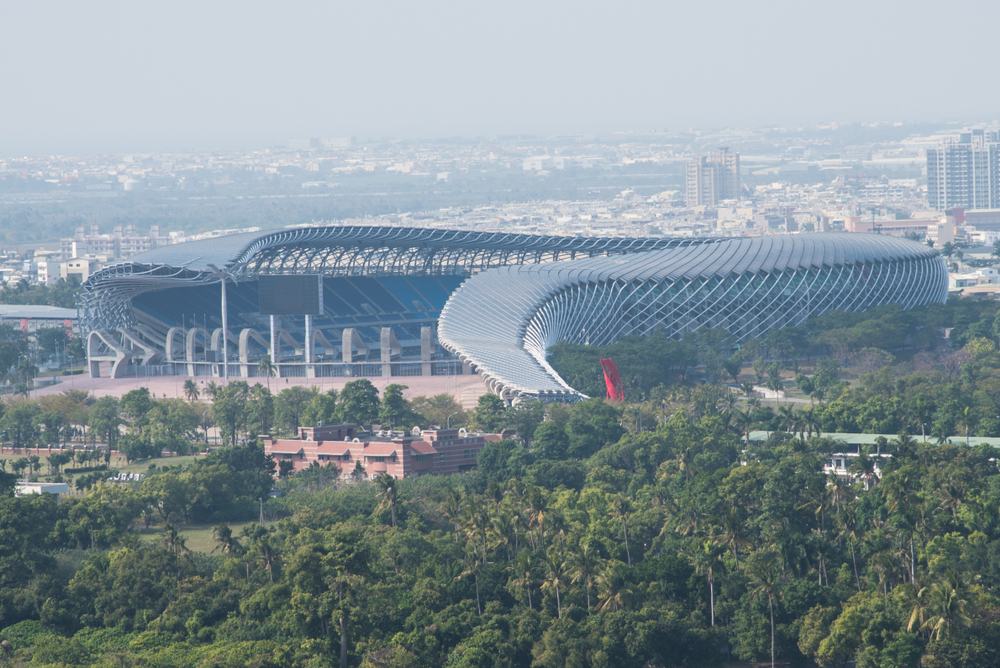
Kaohsiung National Stadium in Taiwan is recognized for its eco-friendly design, being the world’s largest stadium powered entirely by solar energy. Designed by Japanese architect Toyo Ito, its curving, open-ended form resembles a flowing river, symbolizing unity and strength. The structure is fitted with 8,844 solar panels, which generate enough energy to power the stadium and surrounding areas, demonstrating a commitment to sustainability. With a seating capacity of 55,000, it is not only impressive in size but also in its dedication to environmental innovation.
Mercedes-Benz Stadium
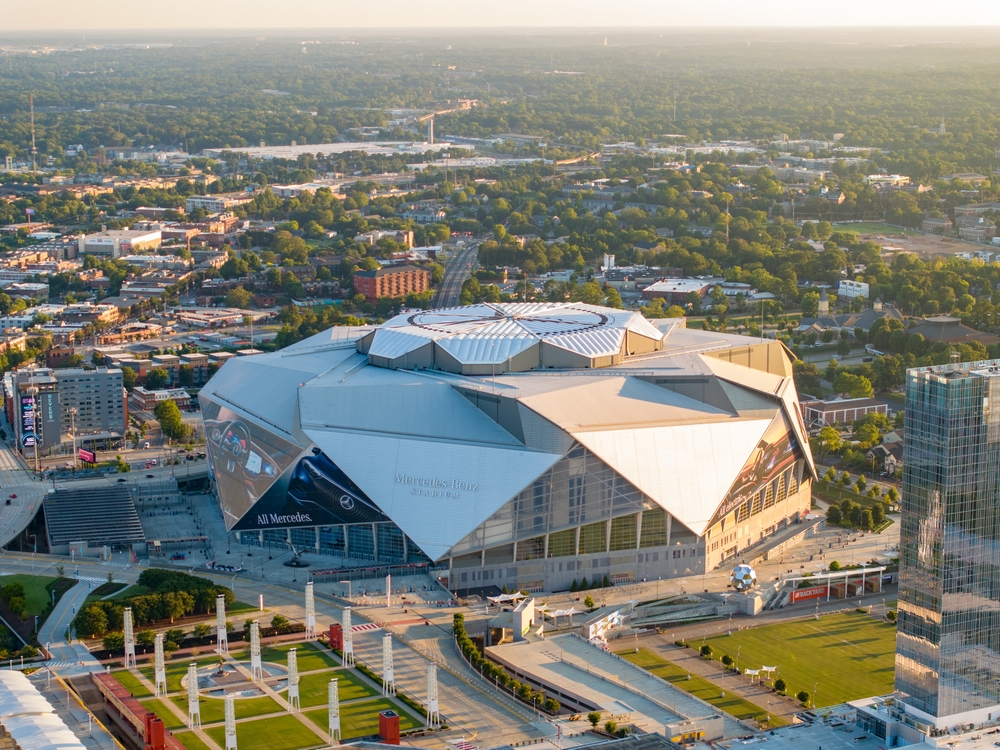
The Mercedes-Benz Stadium in Atlanta, USA, is renowned for its revolutionary retractable roof that opens and closes like a camera aperture. This dynamic roof design, made up of eight triangular panels, provides an impressive visual spectacle while allowing natural light to flood the stadium. Home to the Atlanta Falcons and Atlanta United FC, the stadium can seat up to 71,000 fans and is considered a technological marvel in the sports world. The sustainable features of the stadium, such as rainwater collection systems and energy-efficient lighting, align with its cutting-edge design. Its versatility allows for hosting a variety of events, from football and soccer matches to concerts and conferences, making it a hub for sports and entertainment.
Baku Crystal Hall
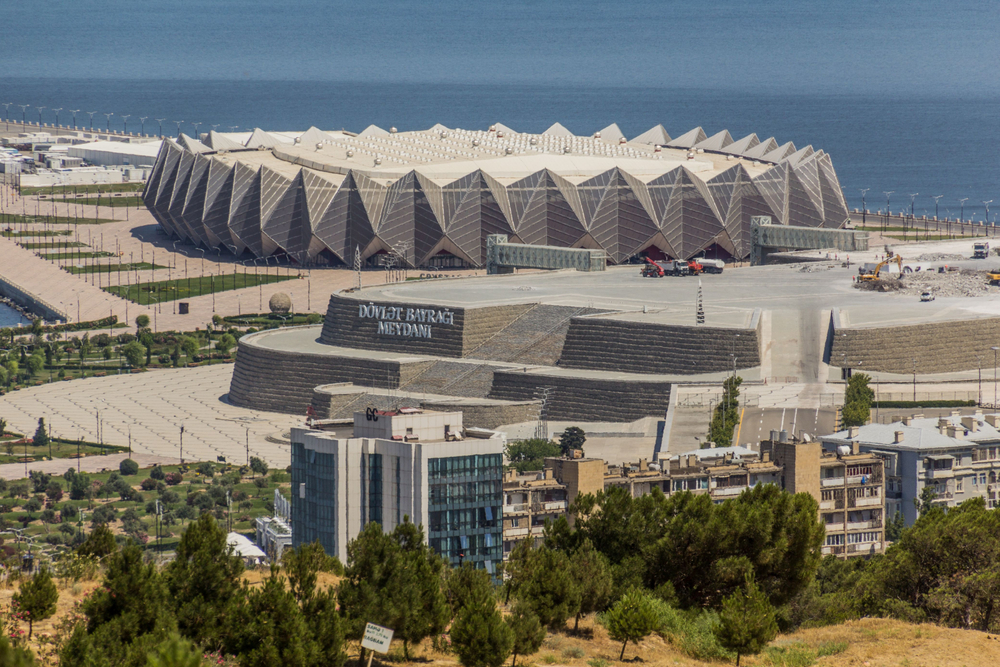
Baku Crystal Hall in Azerbaijan is known for its shimmering, crystalline facade, which lights up the skyline of Baku. Built in just eight months to host the 2012 Eurovision Song Contest, the stadium is constructed from lightweight steel with a geometric design that reflects the natural beauty of the surrounding Caspian Sea. The facade is illuminated by 9,500 LED lights that change colors and create dazzling visual effects, resembling the many facets of a cut crystal. With a seating capacity of 25,000, the hall is used for both concerts and sports events, offering flexibility in its design.
AAMI Park
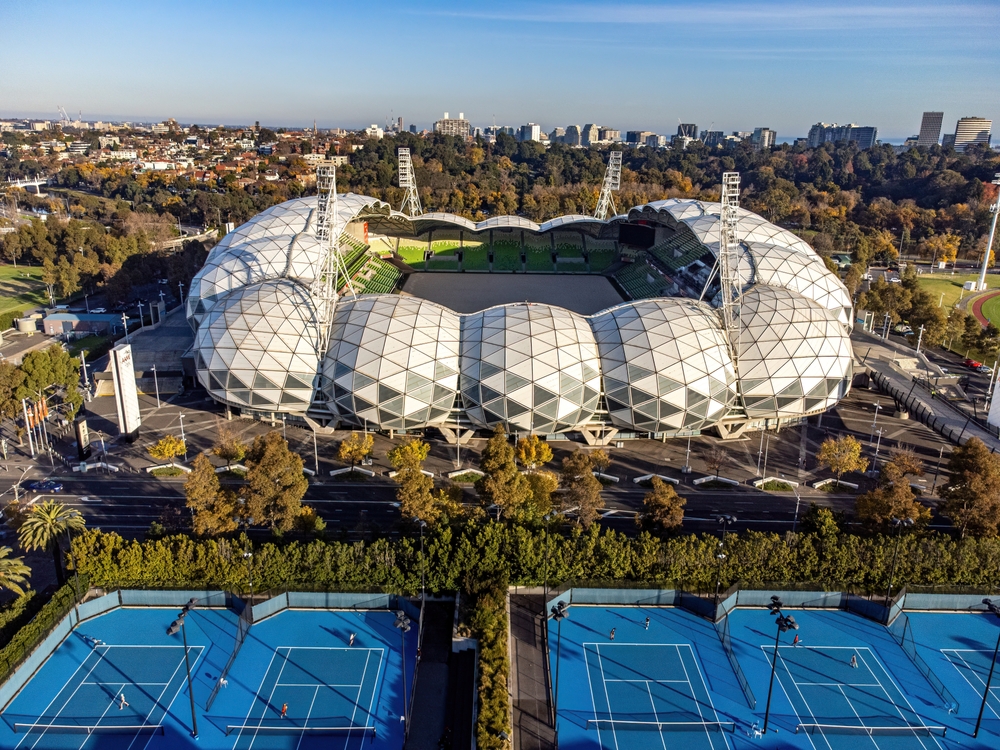
AAMI Park in Melbourne, Australia, features a striking geodesic dome roof that resembles interlocking bubbles. Designed by Cox Architecture, the roof is made of lightweight steel and uses 50% less material than a typical stadium roof of the same size. The innovative design not only reduces its environmental footprint but also enhances the viewing experience, providing unobstructed sightlines for the 30,000 spectators. The roof is fitted with LED lights that change color during events, adding to its dynamic and modern feel. The stadium is used for rugby, soccer, and concerts, making it a versatile venue with a unique architectural presence.
National Stadium Warsaw
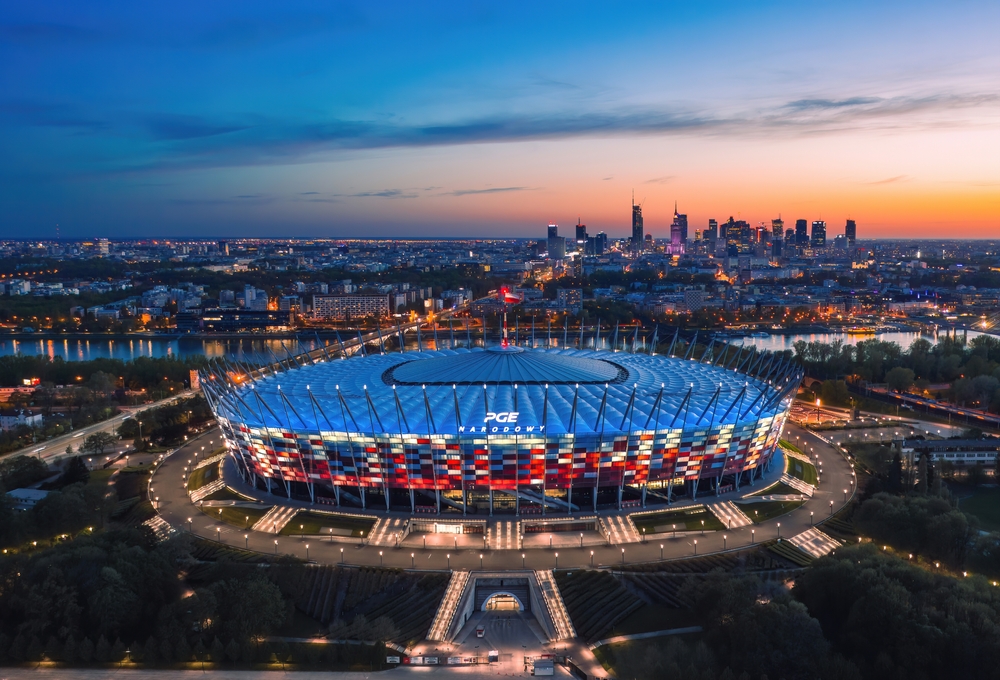
The National Stadium in Warsaw, Poland, is an architectural landmark known for its woven facade of red and white panels, symbolizing the Polish flag. Designed by Gerkan, Marg and Partners, it features a retractable roof made of steel wire mesh, which opens and closes depending on the weather. With a capacity of 58,000, it is the largest stadium in Poland and serves as the home for the Polish national football team. Its design focuses on creating a sense of national pride, while also offering state-of-the-art facilities for both sporting and cultural events. The use of locally sourced materials further enhances its connection to Polish heritage.
Showa Denko Dome
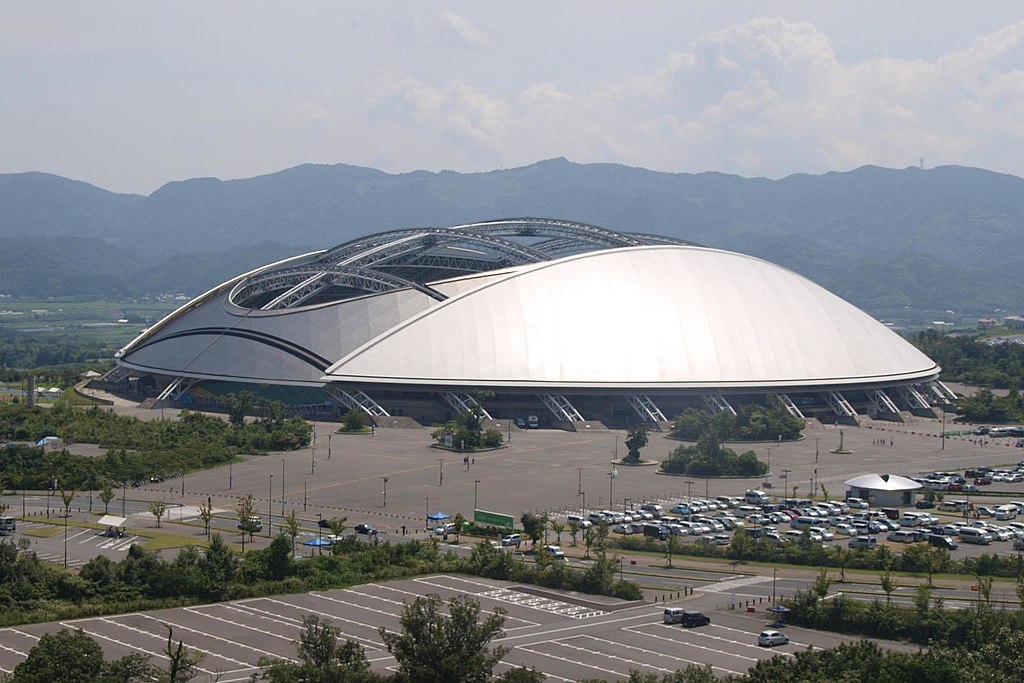
Located in Oita, Japan, the Showa Denko Dome is renowned for its retractable roof, which opens and closes in a motion that mimics the blinking of an eye. Designed by architect Kisho Kurokawa, it has become known as the “Big Eye” for this unique feature. The stadium is primarily used for football and rugby matches, but its flexible design allows it to accommodate various events. The roof is made from lightweight materials and uses a system of wires and winches to operate smoothly, making it an engineering feat. Its open design allows for natural ventilation and breathtaking views of the surrounding landscape.
Tottenham Hotspur Stadium
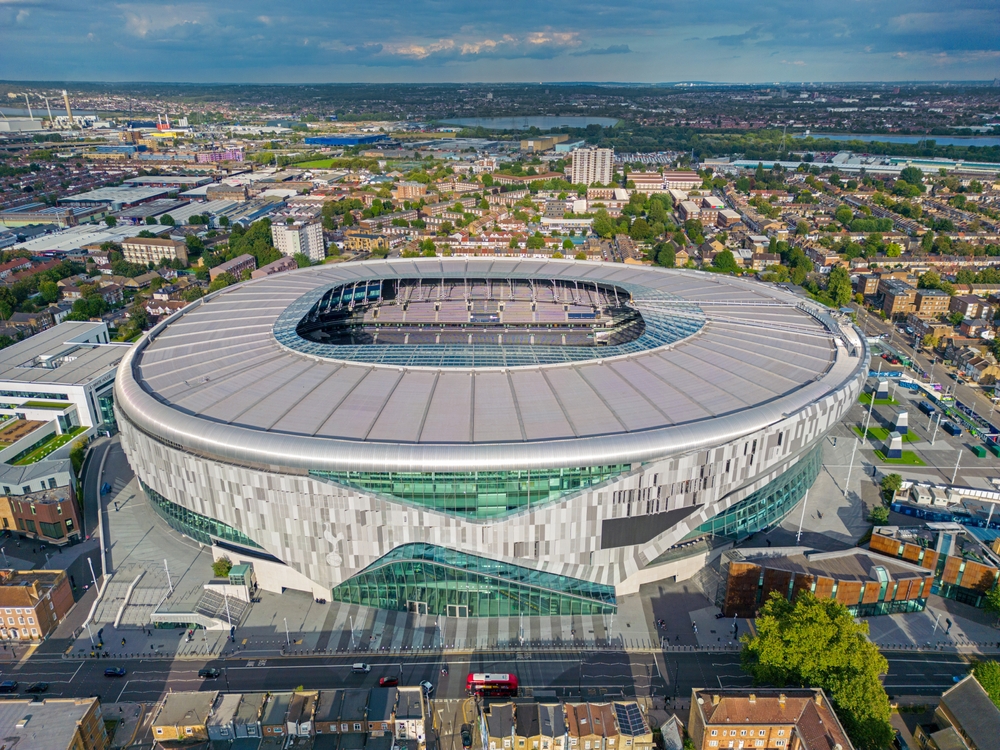
The Tottenham Hotspur Stadium in London, designed by Populous, stands out for its cutting-edge design and dual functionality. Completed in 2019, this 62,062-seat stadium is the first to host both Premier League football and NFL games. Its striking exterior features 4,800 perforated metal panels, which reflect sunlight during the day and emit a dazzling glow at night. The retractable pitch is a standout feature, designed to slide out entirely, allowing for multipurpose use beneath the grass surface, including NFL matches. The single-tier South Stand, the largest in the UK, has a steep 35-degree rake to bring fans closer to the action, fostering an intense atmosphere. Its integration of advanced technology and fan-centric design earned it accolades as one of the most advanced stadiums globally. With a 17,500-seat wall of fans, it provides an electrifying experience for supporters.
Optus Stadium
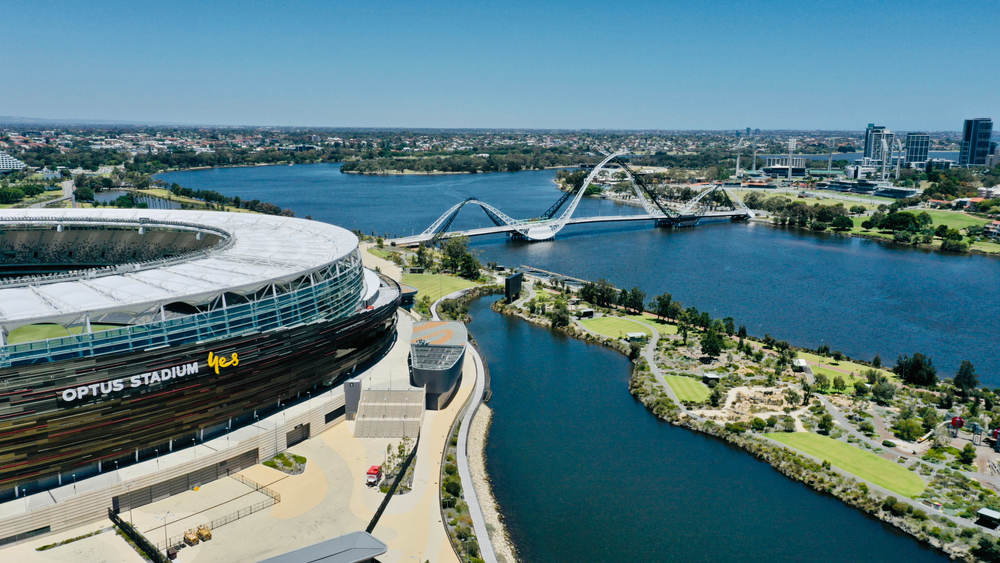
Located in Perth, Australia, Optus Stadium is renowned for its striking bronze facade and eco-friendly design. Opened in 2018, this 61,266-seat multipurpose venue was designed by Cox Architects, HKS, and Hassell to cater to Australian Rules Football, cricket, rugby, and concerts. The stadium’s elliptical shape ensures a compact, close-up experience for spectators, while its fabric roof covers over 85% of the seating area, protecting fans from the elements. The facade, made of perforated aluminum strips, allows for natural ventilation while its lighting system enhances its bronze appearance with dynamic LED lighting displays. Its proximity to the Swan River allows it to incorporate water and landscape elements into its overall aesthetic.
Sapporo Dome
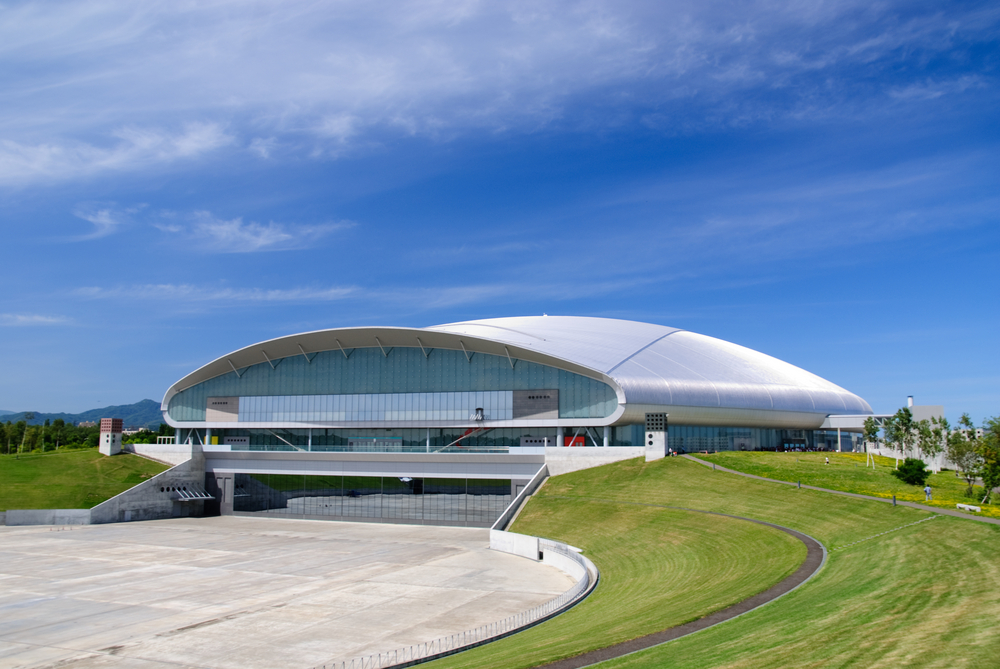
Located in Sapporo, Japan, the Sapporo Dome is one of the most innovative stadiums in the world due to its retractable grass pitch. Opened in 2001 and designed by architect Hiroshi Hara, the 53,000-seat stadium has a unique mechanism that allows the natural grass field to “hover” out of the dome, switching between baseball and soccer with ease. It also features an advanced air conditioning system to maintain optimal conditions, regardless of the weather outside. The Sapporo Dome hosted matches during the 2002 FIFA World Cup and remains one of the premier sporting venues in Japan.
This article originally appeared on Rarest.org.
More from Rarest.org
8 Obscure Bands from the `70s with a Cult Following

The 1970s were a golden era for rock music, with countless bands emerging and experimenting with new sounds. While many acts found mainstream success, there were plenty of hidden gems that never quite broke through to the masses. Read More.
10 Highly Prized Antique Scientific Instruments Collectors Seek
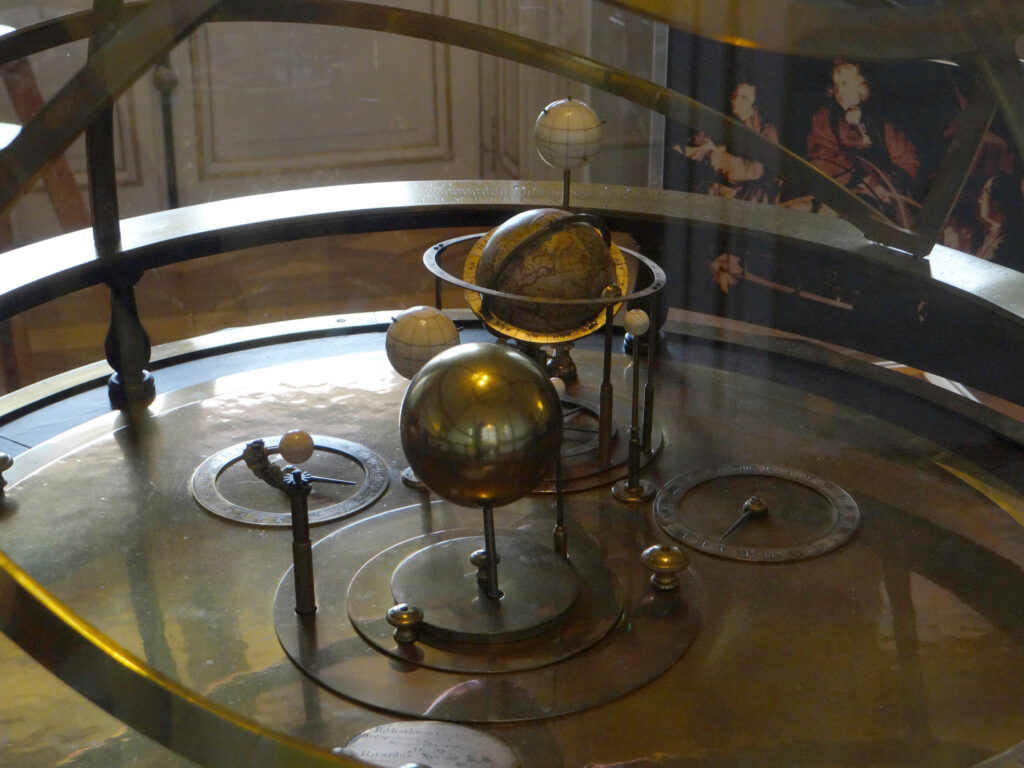
Collecting antique scientific instruments offers a unique glimpse into the history of discovery and innovation. These prized tools, once used by scientists, astronomers, and navigators, hold both historical and aesthetic value. Read More.
8 Luxury Whiskey Brands That Define Sophistication

When it comes to luxury whiskey, true sophistication lies in more than just the price tag—it’s about craftsmanship, heritage, and the unique flavors that have been perfected over time. From rare, aged single malts to meticulously crafted blends, these whiskeys offer an unmatched experience for connoisseurs. Read More.
